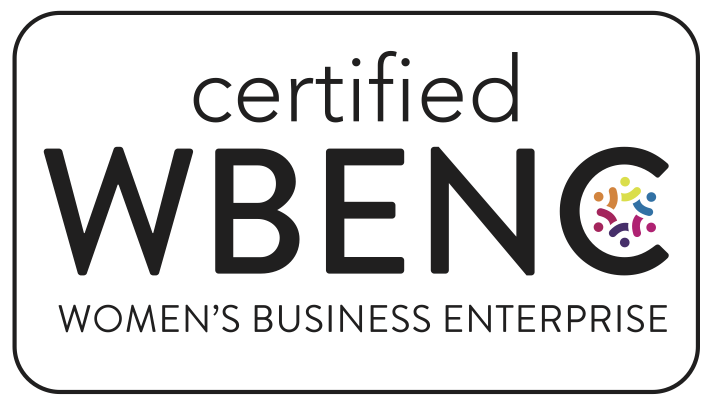There's a lot that companies can measure throughout the hiring process. With the right tools, though, measuring is easy. The challenge lies in knowing what to measure and how to communicate and act on that information. Three case studies illustrate just how diverse such challenges -- and solutions to them -- can be.
Three companies have adopted very different approaches to using metrics to inform how they attract and engage candidates, source from more diverse candidate pools, and save money by improving their hiring efficiency. All three examples illustrate the same underlying theme: the ability to measure performance generally improves performance, and the ability to communicate proof of concept to business leaders (and not just to those in HR) frees up additional resources and improves performance further.
Case Study #1: Cedar Fair's Rollercoasters Don't Run Themselves
Cedar Fair Entertainment Company owns and operates 11 amusement parks, 4 water parks, 2 sports complexes, and 11 hotel properties.1 Because Cedar Fair's parks can't open unless they have enough trained staff to operate safely, the company starts hiring its 47,000 seasonal employees months in advance and keeps very close tabs on their progress. If the company's high-volume hiring falls short, its rides and attractions remain idle -- and its revenues plummet.
During the hiring season, Cedar Fair monitors four key metrics daily:
Number of hires per park. This is Cedar Fair's most important metric. Its parks (or at least parts of parks) can't open without appropriate staffing levels. Although hiring starts months out, much of it takes place in the lead-up to opening day. The recruitment team keeps close tabs on hires per park as a percentage of staff 30 and 60 days from opening. Knowing where each park stands allows this team to be nimble and deploy resources to places that need them most.
Time to hire. The majority of Cedar Fair's employees have other commitments (for example, many of them are students, teachers, or police officers). The company's recruiters can't afford to spend too much time on any one candidate: their hiring process works only if they keep the whole thing short and give candidates quick decisions. That's why the team aims to accept (or reject) a candidate within seven business days. Having this ticker in the background helps Cedar Fair's recruiters effectively manage their time and make offers faster.
Total onboarded staff. Cedar Fair's hiring team aims to have 90 percent of new hires show up for their first day, but the company faces a serious "ghosting" issue, in large part because so many of its seasonal employees are young and relatively inexperienced. Recruiters monitor how often new hires open e-mail from them and, if engagement is low, follow up with text messages.
Boomerang hires. Sourcing, hiring, and training all go easier when hiring from the same candidate pool. Cedar Fair's team aims to rehire a minimum of 35 percent (and hopes for closer to 50 percent) of the previous year's workforce. A candidate relationship management system (CRM) helps Cedar Fair's team keep track of engaged employees and encourage them to return for the following season.
Cedar Fair's recruiters get in the weeds with these numbers, keeping close eyes on their personalized analytics dashboards. But because their success shapes the company's success, they aren't the only ones interested those numbers: in the run-up to park openings, executives receive daily higher-level reports.
Case Study #2: Recruitment Metrics Help Celanese Attract Diverse Candidates
The Fortune 500 company Celanese manufactures chemicals and other materials used worldwide by the paint and coating industry. Before Celenase implemented the use of talent-acquisition software, it had a completely manual hiring process that made hiring between 750 and 950 positions per year across 42 countries more complicated than it needed to be. At the same time, the company was facing a growing challenge that surpassed the need to hire quickly: a lack of interested candidates.
Many people regard work in the manufacturing industry as "unglamorous" and never consider it because they hold outdated perceptions of loud, noisy plants and long hours for little pay. But that doesn't accurately describe modern manufacturing, in which many jobs are highly specialized niche positions. Because these roles require very specific credentials, the pool of qualified candidates is far smaller than many manufacturers would like. Celanese has sought to address this challenge by growing its workforce responsibly and intentionally, in particular by making a commitment to sourcing diverse candidates and bringing historically underrepresented groups (including women and ethnic minorities) into quality, stable manufacturing careers.
Robust metrics and reporting provide a 360-degree view into Celanese's diversity hiring efforts -- a major priority for the company's executive team. Recruiters monitor diversity metrics throughout the hiring process and see if there are points at which candidates drop out. Knowing when, where, and why diverse candidates fall off has helped Celanese recruiters up their game and be more responsive to those candidates' interests (for example, by creating short videos that showcase diverse employees throughout the company).
"Pulling that data when you're all in one system is essential," says Jim D'Amico, a global talent acquisition leader at Celanese. "We can put together comparative data, and not just on the basic talent metrics." These efforts are paying off: today 93 percent of Celanese's hiring slates include diverse candidates, up from 77 percent just a couple of years ago.
Case Study #3: AmTrust Financial Cuts Hiring Costs by Replacing Its Outdated ATS
Imagine being asked to prepare dinner for some guests without knowing how many there will be, when they will arrive, and whether any of them have food allergies. Without this information, making dinner -- usually a fairly achievable task -- becomes nearly impossible.
AmTrust Financial's recruitment team found themselves in a similar predicament when they didn't have insight into what was working and what wasn't. Their old applicant tracking system (ATS) didn't yield good data and made it difficult to evaluate the company's recruitment and hiring process. Because of the lack of automation, the recruitment team spent a lot of extra time logging in and out of systems and doing redundant tasks.
Although the proper tools could address those inefficiencies, the real challenge was that the recruitment team didn't know where to spend its time and effort sourcing candidates and leaned heavily on outside agencies to fill open positions. Kimberly Bowen, AmTrust's former vice president of talent acquisition, describes the tension this created in the business: "Our business leaders thought recruiting wasn't working, that the recruiting team wasn't doing everything to get them good talent."
After upgrading its ATS to one that better met its needs, AmTrust gained access to clear, precise data that keeps the company's executives happy -- as does saving $13,000,000 per year in recruitment agency fees. With insight into what is (and isn't) working, the recruitment team can make data-driven decisions that save money, streamline hiring, and improve the pool of qualified candidates.
Using Hiring Metrics to Meet Business Goals
Companies don't track recruiting KPIs because doing so is fun. They do it to see what's working and what needs to be fixed (or ditched). Just as important as having this information, though, is using it to communicate success and ongoing challenges to business leadership. Then, and only then, can recruiters get the buy-in and resources they need to address those challenges head on.

